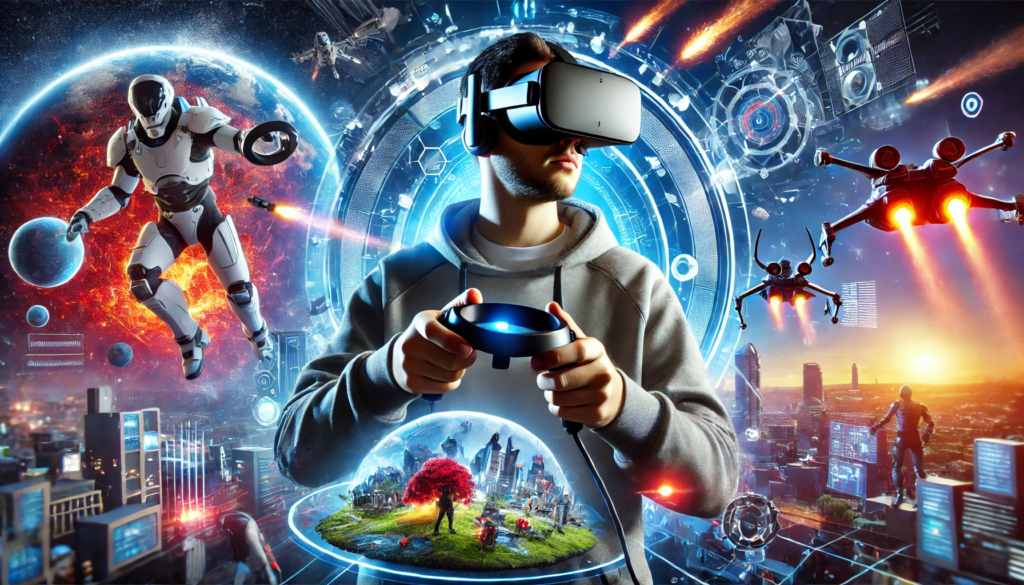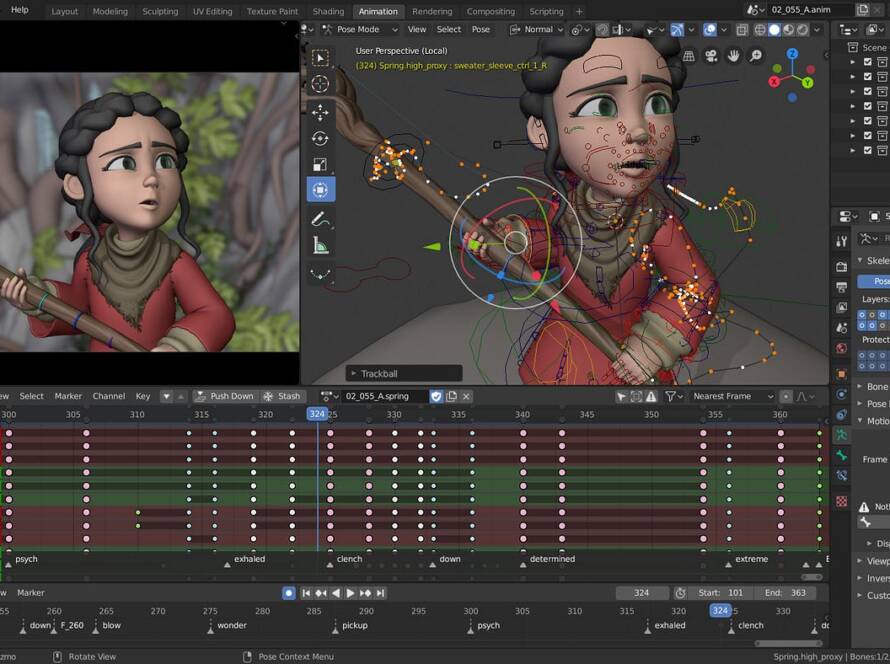
Virtual Reality (VR) gaming has evolved from a futuristic concept into a rapidly growing segment of the gaming industry. With advancements in hardware, graphics, and gameplay mechanics, VR is delivering immersive experiences that transport players into new worlds. From action-packed adventures to realistic simulations, VR is changing the way we play games. This article explores the current state of VR gaming, its potential, and how it’s shaping the future of the industry.
What is VR Gaming?
Virtual reality gaming involves the use of VR headsets and controllers to create an interactive, 3D environment where players can physically move, look around, and interact with virtual objects. Popular VR platforms like the Oculus Quest, PlayStation VR, and HTC Vive have made VR gaming more accessible, bringing immersive experiences directly into players’ homes.
Unlike traditional gaming, VR offers a full-body experience, where players can engage in everything from shooting enemies to solving puzzles by physically moving within a virtual world. This level of immersion has made VR a unique and exciting medium for gamers.
The Growth of VR Gaming
Over the last few years, VR gaming has grown significantly, thanks to improvements in technology and the affordability of VR devices. What was once a niche market is now attracting millions of players worldwide. Popular VR titles like Half-Life: Alyx, Beat Saber, and The Walking Dead: Saints & Sinners have demonstrated the potential of VR to deliver deeply engaging and high-quality gaming experiences.
Major gaming companies have also started to invest heavily in VR, recognizing its potential to expand the boundaries of gaming. Meta (formerly Facebook) has made significant strides in this space with the Oculus Quest series, pushing standalone VR devices into the mainstream. Meanwhile, Sony continues to support VR with the PlayStation VR, offering AAA titles tailored for virtual reality.
Why VR Gaming is Taking Off
The biggest appeal of VR gaming is its ability to immerse players in a fully interactive world. Unlike traditional gaming, where the action is viewed on a flat screen, VR allows players to feel like they are inside the game, enhancing the sense of realism and presence.
VR opens up new possibilities for gameplay mechanics. Players can physically move, grab, throw, or dodge in the virtual world, making the experience more interactive and intuitive. Games like Beat Saber and Superhot VR utilize these mechanics in ways that are not possible in traditional games.
Many VR games require players to stand, move, and engage their bodies, making VR gaming a form of active entertainment. This has led to the popularity of fitness-oriented VR titles like FitXR and BoxVR, which combine exercise with gaming, providing a fun and effective workout.
VR also enables new forms of social interaction. Multiplayer VR games allow players to connect with others in virtual spaces, fostering a sense of community and shared experience. VR chat rooms, social games, and multiplayer modes are helping build social networks within virtual worlds.
Challenges Facing VR Gaming
Despite its growth, VR gaming still faces several challenges. One of the main barriers is motion sickness. Some players experience dizziness or nausea when moving within a VR game, especially during fast-paced action sequences. While developers are working to reduce these effects through improved game design and hardware, motion sickness remains a concern for many potential players.
Another issue is cost. While VR headsets have become more affordable, they still represent a significant investment, especially when paired with the high-end hardware required for the best experiences. However, as VR technology continues to advance, we can expect prices to decrease over time.
Finally, content is a challenge. While there are several standout VR titles, the overall library of high-quality VR games is still limited compared to traditional gaming platforms. Developers are gradually addressing this, with more studios exploring VR as part of their game development strategies.
The Future of VR Gaming
The future of VR gaming is bright, with ongoing technological advancements poised to take virtual reality to new heights. Improvements in VR headsets, such as better display resolution, wider fields of view, and enhanced comfort, are making the experience more enjoyable for players.
Additionally, the development of haptic feedback suits and gloves will add even more realism, allowing players to feel the virtual world through physical sensations. These innovations will blur the lines between virtual and physical experiences, further enhancing immersion.
Cloud gaming is another area where VR may see growth. With faster internet speeds and more powerful servers, VR games could be streamed directly to headsets without the need for a high-end PC or console, making VR gaming even more accessible.
Virtual reality gaming is rapidly gaining momentum, offering immersive, interactive experiences that redefine what gaming can be. While challenges like motion sickness and cost remain, advancements in technology and content are pushing VR into the mainstream. As VR continues to evolve, it’s clear that virtual reality will play a significant role in the future of gaming, providing players with unprecedented levels of immersion and engagement.


